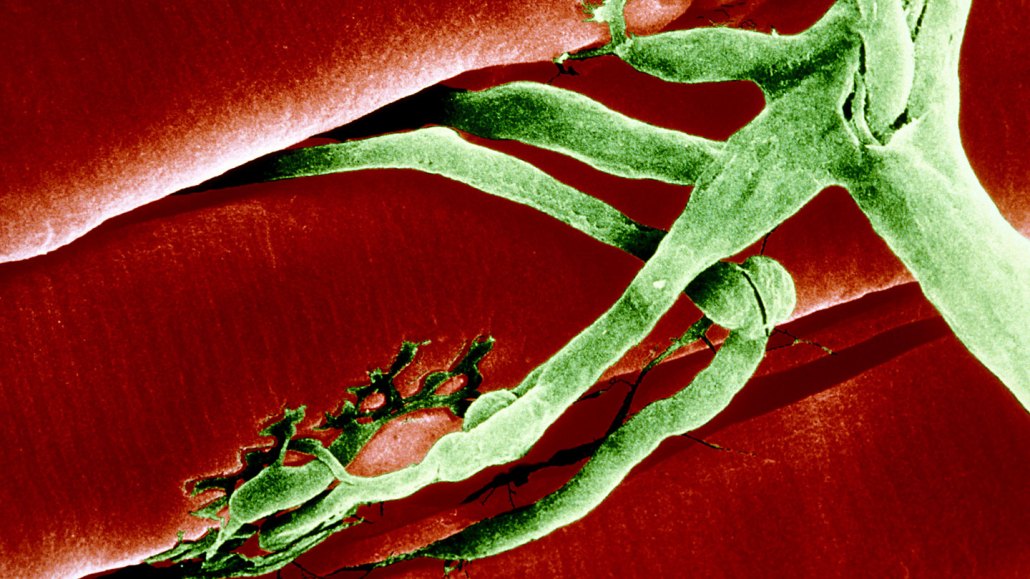Blocking an aging-related enzyme may restore muscle strength
Researchers labeled the protein a “gerozyme” because of its link with aging

Nerve cells (green) and muscle fibers (red) meet at connections called synapses in this colored scanning electron microscope image. Blocking an aging-related enzyme helped to restore the synapses in old mice, researchers report.
Don W. Fawcett / Science Source







